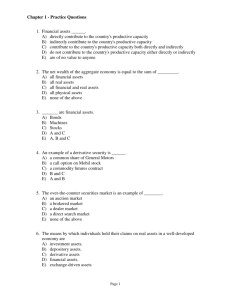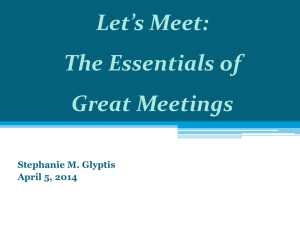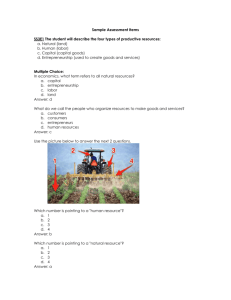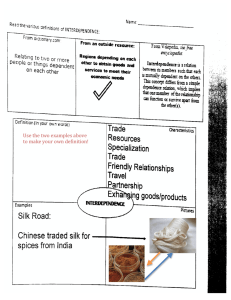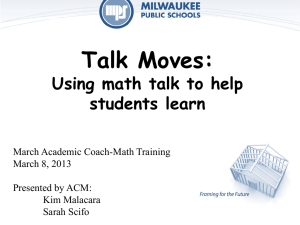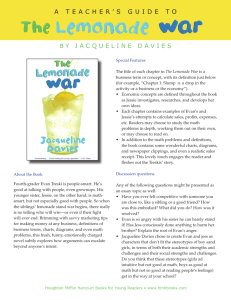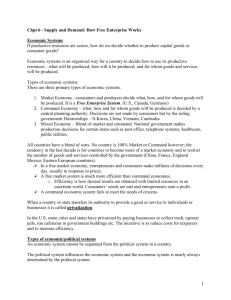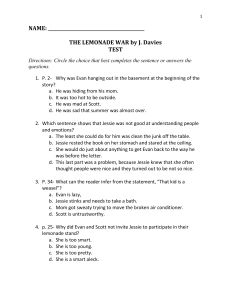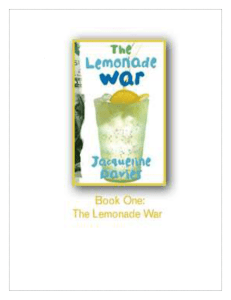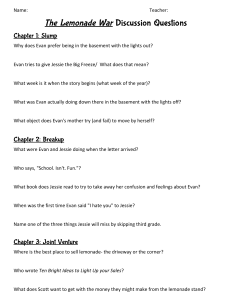The Lemonade War
advertisement
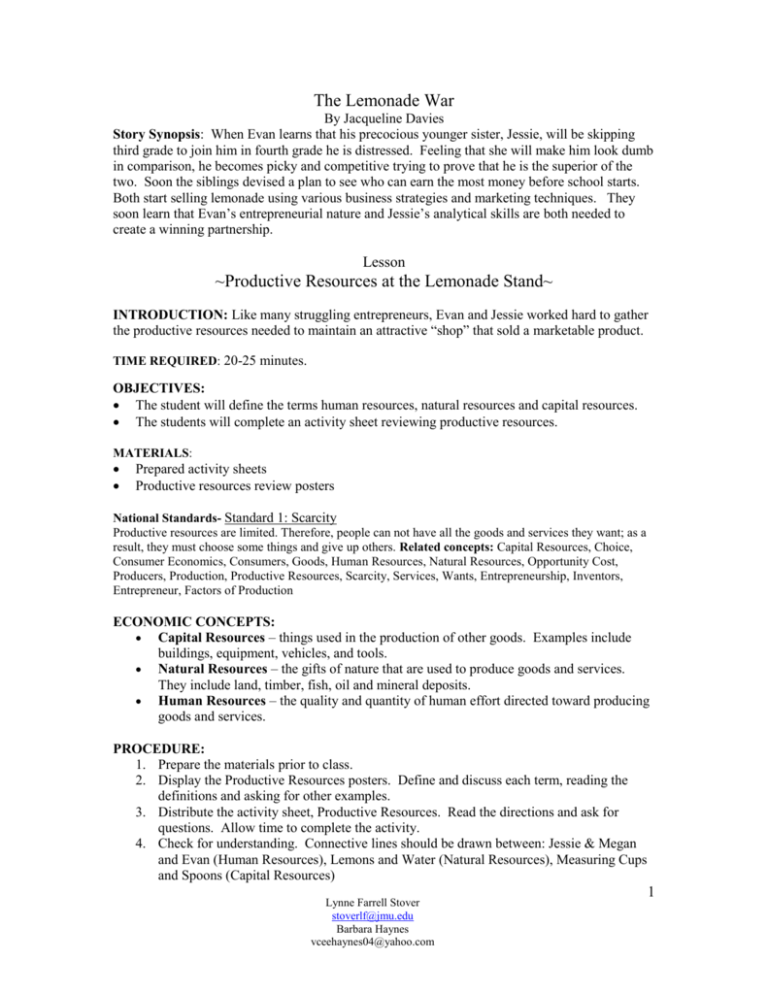
The Lemonade War By Jacqueline Davies Story Synopsis: When Evan learns that his precocious younger sister, Jessie, will be skipping third grade to join him in fourth grade he is distressed. Feeling that she will make him look dumb in comparison, he becomes picky and competitive trying to prove that he is the superior of the two. Soon the siblings devised a plan to see who can earn the most money before school starts. Both start selling lemonade using various business strategies and marketing techniques. They soon learn that Evan’s entrepreneurial nature and Jessie’s analytical skills are both needed to create a winning partnership. Lesson ~Productive Resources at the Lemonade Stand~ INTRODUCTION: Like many struggling entrepreneurs, Evan and Jessie worked hard to gather the productive resources needed to maintain an attractive “shop” that sold a marketable product. TIME REQUIRED: 20-25 minutes. OBJECTIVES: The student will define the terms human resources, natural resources and capital resources. The students will complete an activity sheet reviewing productive resources. MATERIALS: Prepared activity sheets Productive resources review posters National Standards- Standard 1: Scarcity Productive resources are limited. Therefore, people can not have all the goods and services they want; as a result, they must choose some things and give up others. Related concepts: Capital Resources, Choice, Consumer Economics, Consumers, Goods, Human Resources, Natural Resources, Opportunity Cost, Producers, Production, Productive Resources, Scarcity, Services, Wants, Entrepreneurship, Inventors, Entrepreneur, Factors of Production ECONOMIC CONCEPTS: Capital Resources – things used in the production of other goods. Examples include buildings, equipment, vehicles, and tools. Natural Resources – the gifts of nature that are used to produce goods and services. They include land, timber, fish, oil and mineral deposits. Human Resources – the quality and quantity of human effort directed toward producing goods and services. PROCEDURE: 1. Prepare the materials prior to class. 2. Display the Productive Resources posters. Define and discuss each term, reading the definitions and asking for other examples. 3. Distribute the activity sheet, Productive Resources. Read the directions and ask for questions. Allow time to complete the activity. 4. Check for understanding. Connective lines should be drawn between: Jessie & Megan and Evan (Human Resources), Lemons and Water (Natural Resources), Measuring Cups and Spoons (Capital Resources) Lynne Farrell Stover stoverlf@jmu.edu Barbara Haynes vceehaynes04@yahoo.com 1 Activity Sheet- Productive Resources Directions: Draw a like connecting the things that are alike. On the connecting line write the correct productive resource of each pair: Natural, Capital or Human. Human Resources-People Who Work Natural Resources-Gifts from Nature Capital Resources Buildings-Tools-Machines Water Jessie & Megan Lemons Spoons Measuring Cups Evan Lynne Farrell Stover stoverlf@jmu.edu Barbara Haynes vceehaynes04@yahoo.com 2
